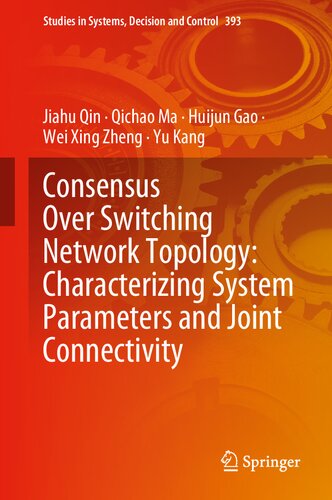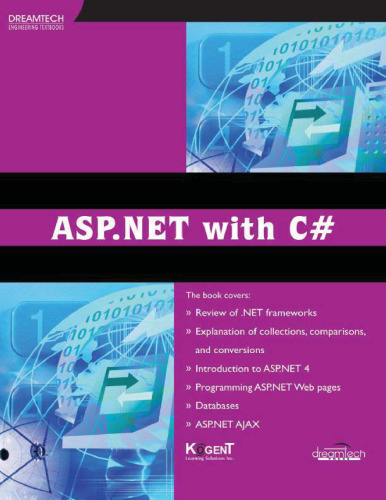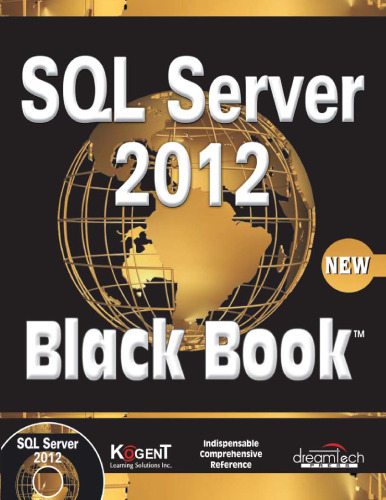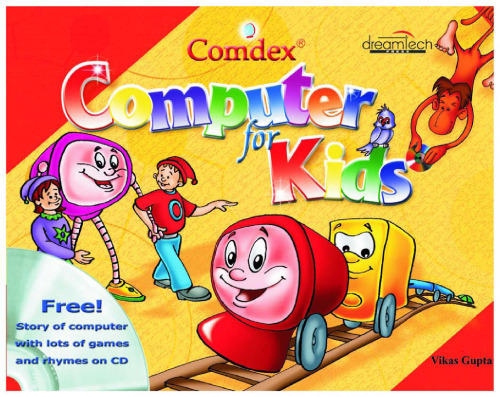Background During the past years, distributed coordination for networked dynamical systems has been an active area of research. This is due to the broad applications in such areas as sensor networks, smart grids, rendezvous tasks, swarming and flocking, and congestion control in communication networks. One of the critical and central problems in distributed coordination is to design a network consensus algorithm (or protocol) such that a group of agents 1 can reach consensus on the shared information. By reaching consensus, we mean that a network of agents agree on certain variables of interest, such as position, opinion or decision depending on the context. To realize consensus, each agent exchanges information with its nearest neighbors locally. In essence, such a protocol or algorithm propagates information in a diffusive way by taking weighted sums of state or output deviations as inputs. The distributed consensus protocol has been proven to work efficiently to drive all agents to reach agreement and is adopted in this book as well. In general, three factors play important roles in determining the evolution of net- worked dynamical agents, in particular whether consensus among the agents can be realized. They are (1) self-dynamics of each agent, (2) inner coupling describing how input influences state evolution, and (3) the interaction topology among the whole agents. [Refer to the distributed coordination scheme in Fig. 1.1.] It is clear that for single-integrators no self-dynamics exists. In addition, the inner coupling is an Iden- tity map. Hence, the interaction topology itself characterizes the evolution of agents. Following such an idea, the consensus for a network of single-integrators has been investigated from various perspectives. Of particular interest is the consensus over switching interaction topology, see [1–12] for example. This is motivated by the fact that in many scenarios networked systems can possess a dynamic interaction topol- ogy due to node and link failures/creations, packet-loss, asynchronous consensus, state-dependence, formation reconfiguration, evolution, and flocking.
چکیده فارسی
زمینه در طول سال های گذشته، هماهنگی توزیع شده برای سیستم های دینامیکی شبکه ای یک حوزه فعال تحقیقاتی بوده است. این به دلیل کاربردهای گسترده در مناطقی مانند شبکه های حسگر، شبکه های هوشمند، وظایف قرار ملاقات، ازدحام و هجوم، و کنترل ازدحام در شبکه های ارتباطی است. یکی از مشکلات اساسی و اصلی در هماهنگی توزیع شده، طراحی یک الگوریتم اجماع شبکه (یا پروتکل) به گونه ای است که گروهی از عوامل 1 بتوانند در مورد اطلاعات مشترک به توافق برسند. منظور ما از دستیابی به اجماع این است که شبکه ای از عوامل بر روی متغیرهای خاص مورد علاقه مانند موقعیت، نظر یا تصمیم بسته به زمینه توافق دارند. برای تحقق اجماع، هر عامل اطلاعات را با نزدیکترین همسایگان خود به صورت محلی مبادله می کند. در اصل، چنین پروتکل یا الگوریتمی با در نظر گرفتن مجموع وزنی انحرافات حالت یا خروجی به عنوان ورودی، اطلاعات را به روشی پراکنده منتشر می کند. پروتکل اجماع توزیع شده ثابت شده است که به طور مؤثری کار می کند تا همه عوامل را به توافق برساند و در این کتاب نیز به تصویب رسیده است. به طور کلی، سه عامل نقش مهمی در تعیین تکامل عوامل دینامیکی شبکه ای ایفا می کنند، به ویژه اینکه آیا اجماع بین عامل ها می تواند محقق شود یا خیر. آنها (1) خود پویایی هر عامل، (2) جفت درونی توصیف می کنند که چگونه ورودی بر تکامل حالت تأثیر می گذارد، و (3) توپولوژی تعامل بین کل عامل ها. [به طرح هماهنگی توزیع شده در شکل 1.1 مراجعه کنید.] واضح است که برای یکپارچه سازها هیچ خوددینامیکی وجود ندارد. علاوه بر این، جفت داخلی یک نقشه هویت است. از این رو، توپولوژی تعامل خود تکامل عوامل را مشخص می کند. به دنبال چنین ایده ای، اجماع برای شبکه ای از یکپارچه سازان از دیدگاه های مختلف مورد بررسی قرار گرفته است. برای مثال، اجماع بر سر توپولوژی تعامل سوئیچینگ، مورد توجه خاص است. انگیزه این امر از این واقعیت است که در بسیاری از سناریوها، سیستمهای شبکهای میتوانند دارای توپولوژی تعاملی پویا به دلیل خرابی/ایجاد گره و پیوند، از دست دادن بسته، اجماع ناهمزمان، وابستگی به حالت، پیکربندی مجدد شکلگیری، تکامل، و گله شدن باشند. p>
ادامه ...
بستن ...
vBackground During the past years, distributed coordination for networked dynamical systems has been an active area of research. This is due to the broad applications in such areas as sensor networks, smart grids, rendezvous tasks, swarming and flocking, and congestion control in communication networks. One of the critical and central problems in distributed coordination is to design a network consensus algorithm (or protocol) such that a group of agents 1 can reach consensus on the shared information. By reaching consensus, we mean that a network of agents agree on certain variables of interest, such as position, opinion or decision depending on the context. To realize consensus, each agent exchanges information with its nearest neighbors locally. In essence, such a protocol or algorithm propagates information in a diffusive way by taking weighted sums of state or output deviations as inputs. The distributed consensus protocol has been proven to work efficiently to drive all agents to reach agreement and is adopted in this book as well. In general, three factors play important roles in determining the evolution of net- worked dynamical agents, in particular whether consensus among the agents can be realized. They are (1) self-dynamics of each agent, (2) inner coupling describing how input influences state evolution, and (3) the interaction topology among the whole agents. [Refer to the distributed coordination scheme in Fig. 1.1.] It is clear that for single-integrators no self-dynamics exists. In addition, the inner coupling is an Iden- tity map. Hence, the interaction topology itself characterizes the evolution of agents. Following such an idea, the consensus for a network of single-integrators has been investigated from various perspectives. Of particular interest is the consensus over switching interaction topology, see [1–12] for example. This is motivated by the fact that in many scenarios networked systems can possess a dynamic interaction topol- ogy due to node and link failures/creations, packet-loss, asynchronous consensus, state-dependence, formation reconfiguration, evolution, and flocking.
ادامه ...
بستن ...










